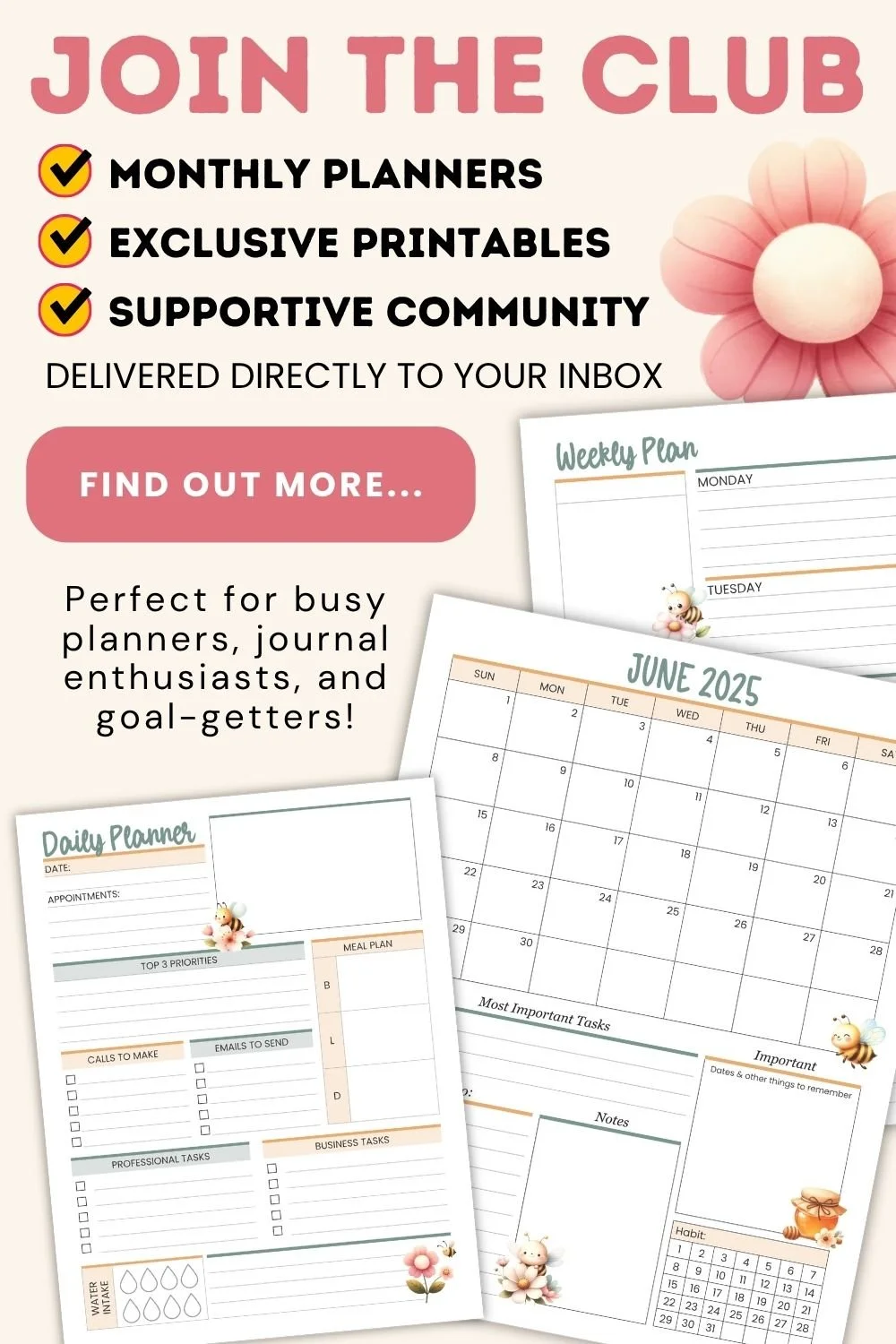How to Create a Weekly Productivity Plan & a Free Printable
P: Productivity - The Foundation of Achieving Your Goals
Productivity is the cornerstone of effective planning. It’s all about getting the right things done efficiently and effectively. By focusing on productivity, you can streamline your tasks, prioritize what truly matters, and make consistent progress toward your goals.
Today we are diving into the P of the P.L.A.N. Everything concept and explore how to create a weekly productivity plan that sets you up for success.
So, what exactly is a weekly productivity plan?
Think of it as your personal roadmap for the week. It lays out your goals, breaks them down into manageable tasks, and schedules them throughout your days.
Having this plan helps you stay organized, prioritize your time, and ensure you're always moving in the right direction.
Without it, it's easy to feel overwhelmed, lose focus, and spend time on things that aren't as important.
Creating a weekly productivity plan allows you to set clear goals, manage your time more effectively, and reduce stress. It's like having a friendly guide that keeps you on track, helps you adapt to changes, and makes achieving your goals feel more manageable.
Let’s dive into how you can create a weekly productivity plan that works for you and sets you up for success.
How to Create a Weekly Productivity Plan
Creating a weekly productivity plan is simpler than you might think. With a few straightforward steps, you can set yourself up for a productive and successful week.
Here’s how to do it:
✨ Set Clear Goals
Start by identifying your main goals for the week. These should be specific, measurable, achievable, relevant, and time-bound (SMART). Clear goals give you direction and purpose, making it easier to prioritize your tasks.
Example Goals:
Complete the project report by Friday.
Finish reading and summarizing a book chapter by Wednesday.
Organize and declutter the garage by Sunday.
✨ Break Down Goals into Tasks
Once you have your goals, break them down into smaller, manageable tasks. This makes large projects less overwhelming and ensures you know exactly what needs to be done each day.
Example Tasks for Organizing the Garage:
Monday: Sort and categorize items (keep, donate, discard).
Tuesday: Donate unwanted items to charity.
Wednesday: Discard items that cannot be donated.
Thursday: Clean and sweep the garage floor.
Friday: Organize remaining items on shelves and storage bins.
Saturday: Label storage bins and finalize organization.
Sunday: Review and make any final adjustments.
✨ Prioritize Your Tasks
Not all tasks are created equal. Use the Eisenhower Matrix to prioritize your tasks based on their urgency and importance:
Urgent and Important: Do these tasks first.
Important but Not Urgent: Schedule these tasks.
Urgent but Not Important: Delegate if possible.
Neither Urgent nor Important: Eliminate or defer.
Example:
Urgent and Important: Submit the project report.
Important but Not Urgent: Organize the garage.
Urgent but Not Important: Respond to non-critical emails.
Neither Urgent nor Important: Browse social media.
To make the process even easier, I've created a quadrant method printable for you!
This handy tool comes in both black/white and color options, so you can choose the one that fits your style.
The printable is laid out with the four quadrants clearly labeled, helping you to categorize your tasks by urgency and importance effortlessly.
Simply download, print, and start using it to streamline your weekly productivity plan. Happy organizing
DOWNLOAD YOUR FREE Worksheet Below
Click the links below to download your worksheet
✨ Time Block Your Schedule
Time blocking involves dedicating specific blocks of time to different tasks or activities. This helps you stay focused and ensures you allocate enough time for your priorities.
Example Time Block Schedule:
8:00 AM - 9:00 AM: Morning routine and planning.
9:00 AM - 11:00 AM: Work on project report.
11:00 AM - 12:00 PM: Emails and administrative tasks.
12:00 PM - 1:00 PM: Lunch break.
1:00 PM - 3:00 PM: Garage organization tasks.
3:00 PM - 5:00 PM: Meetings and collaboration.
5:00 PM - 6:00 PM: Review day and plan for tomorrow.
You can grab a free printable Daily Time Blocking Schedule here.
✨ Review and Adjust Daily
At the end of each day, review your progress and adjust your plan as needed. Identify any tasks that need to be carried over to the next day and make adjustments to your schedule accordingly.
Daily Review Questions:
What did I accomplish today?
What tasks do I need to carry over to tomorrow?
Are there any new priorities or deadlines?
✨ Stay Flexible
Life is unpredictable, and even the best plans can be disrupted. Stay flexible and be prepared to adjust your plan as needed. The key is to remain focused on your main goals and not get discouraged by unexpected changes.
Tips for Staying Flexible:
Build buffer time into your schedule to handle unexpected tasks or delays.
Reassess your priorities regularly to ensure you’re focusing on what truly matters.
Be kind to yourself and remember that it's okay if things don’t go exactly as planned.
✨ Reflect and Improve
At the end of the week, take some time to reflect on your productivity. What worked well? What could be improved? Use these insights to refine your planning process for the next week.
Weekly Reflection Questions:
Did I achieve my goals for the week?
What were my biggest challenges?
How can I improve my productivity next week?
Example Reflection:
Achieved Goals: Completed project report, organized garage.
Challenges: Distractions from unexpected meetings.
Improvements: Schedule buffer time and set clearer boundaries for focus periods.
By following these steps, you can create a weekly productivity plan that helps you stay organized, focused, and on track to achieve your goals.
Remember, productivity isn't about doing more; it's about doing what matters most. Embrace the P in the P.L.A.N. Everything concept, and watch your productivity soar!
Stay tuned for more insights and tips on how to integrate the P.L.A.N. Everything concept into your planning routine.
Want to learn more about the P.L.A.N. Everything concept? This post will explain everything.
Here are a few more posts you might like:
See my Link Party Directory for a current list of blog parties I attend each week.
This post was featured on the following link parties, thank you for your support! ❤️
FOR PERSONAL USE ONLY – Please Read Freebies Terms of Use
(This post may contain affiliate links. For more information, see my disclosures here)
~ SHARE THIS POST ~
Did you like this post? Do you know someone else who might enjoy it? Please take a minute to share it on Pinterest, Facebook, or your favorite social media… Thank you!




















